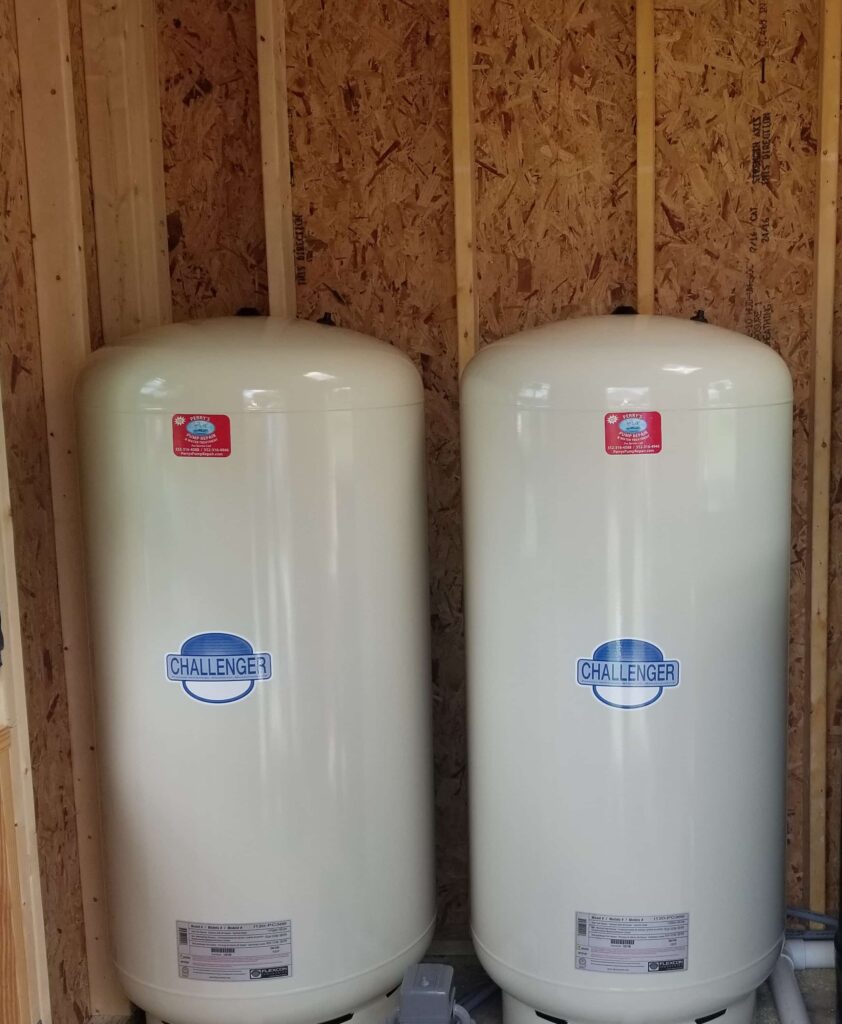Have you ever wondered why you’re able to easily turn your faucet on and off in one motion? Imagine having to manually turn your water pump on and off. Nobody would enjoy doing that. Well, that’s where a pressure tank comes in.
As the name implies, these machines are in charge of maintaining the pressure of water in your home while also prolonging the life of your well pump. There are a multitude of benefits and advantages to having a pressure tank installed in your well pump that’ll we’ll be going over here.
Why Pressure Tanks Are Important

Starting with probably the most important reason — pressure tanks store your water reserve. It holds pressurized water in the pump so that whenever someone turns the faucet on, it gets evenly distributed to different parts of the building.
Another important feature of pressure tanks is in the name itself. It pressurizes your water so that it doesn’t shoot out all at once every time you open your faucet — it maintains a steady stream for necessary comfort.
Everyone who owns a well pump must know this crucial information about the product itself, so that the next time they’re to have a problem, they’ll know where the issue is and how to address it.
How Pressure Tanks Support Your Well Pump
Well pumps are still able to function without a pressure tank, but it’s highly recommended to install a pressure tank because they increase the lifespan of your well pump. Well pumps aren’t designed to operate rapidly or continually; when this happens, they tend to engage in something called water cycling.
Water cycling is when the pump continuously switches on and off every time it pumps water. This is extremely harmful for well pumps as it causes premature wear of the motor. However, there is a solution for this! Pressure tanks are a great way to avoid water cycling because they limit the time that the pump turns itself on and off in between each cycle. By doing this, it extends the pump’s life, makes less noise, and gives a more consistent flow rate.
Maintaining Your Pressure Tank
We all know what a bladder is, right? Turns out well pressure tanks have them too. These devices are like balloons located inside the tank that fill with water when the pressure outside the bladder becomes greater. The standard pressure required for well tanks should be around 30/50, so it’s common to see the pressure at 28 psi. Well tank bladders help keep your tank functioning because it is another safeguard as to why well pumps can turn on and off between each use without unnecessarily wearing out the motor.
It’s important to routinely check your well pressure tank and all the components of it; if something were to break, it would have costly consequences. For example, if your well tank bladder were to burst, the tank would overflow into your septic system or even back up into your house through the drains.
Get Quality Professional Pressure Tank Services with Perry’s Pump Repair
Been noticing some weird things with your water lately? Maybe things such as increased electricity bills, an unsteady stream of water from your faucet, or mysterious clicking sounds? Those could be signs that your pressure tank is faulty. Luckily for you, the team at Perry’s Pump Repair are experts in fixing broken tanks and pumps. We are located in Gainesville, FL. Give us a call, and we’ll be over to check out the problem —whatever it may be!
Call in the Professionals at Perry’s Pump Repair for All Your Water Pump Maintenance Needs
A tripped water pump circuit breaker can be quite frustrating. Not only does it indicate a problem, but it keeps water from flowing into your home. While we may not be electricians, we are well pump experts, and we can tell you what needs to happen next. We’ll help you identify what the issue is, how to fix it, and treat it to last with our warranty guarantee if we can help. Call us today to see how we can help keep your water pump properly functioning and maintained.
Get a Free Quote
